The Buddha Stupa
On our first morning in Kathmandu, we immersed ourselves in ancient Nepali and Tibetan culture and wisdom at one of Nepal's most sacred Buddhist sites.

"As wind moves the prayer flags, so too may our thoughts be lifted—toward compassion, clarity, and the quiet strength of stillness."
—Anonymous
Our first morning in Kathmandu began earlier than planned—jetlag had pulled us out of sleep by dawn. By 7:30, we were already downstairs, eating breakfast in the quiet hotel courtyard. An early start that anyone who knows Kiki would recognize as a small miracle.
Kathmandu, still shrouded in morning haze, slowly began to stir beyond the garden walls. From our window, we watched eagles circle above a patchwork of rooftops, with prayer flags fluttering in the breeze. Beyond the smoggy outlines of buildings, the distant ridgelines of the Kathmandu Valley emerged like old giants wrapped in mist. The Himalayan foothills seemed to be watching us. I was so excited for the journey ahead.

We checked in with our team in Cambodia during our breakfast. The enrollment process for the new school year was in full swing. The familiar rhythm of our work continued, even here, thousands of kilometers away. It was comforting to know that even from afar, the school continued to move forward.

After breakfast, we flagged down a taxi to visit Boudhanath Stupa, more commonly known as the Buddha Stupa, one of Nepal’s most sacred Buddhist sites. The driver quoted us a price that was clearly meant for tourists, but we didn’t argue. The stupa was calling.
Driving through Kathmandu is like being in a video game set to “chaos mode.” Narrow roads packed with honking vehicles, clouds of dust, and a choreography of people, goats, motorbikes, and bicycles all weaving their own paths.
Even before we saw it, we could feel it. The streets narrowed, the noise intensified, and then we stepped into the wide circular plaza, and the atmosphere shifted.
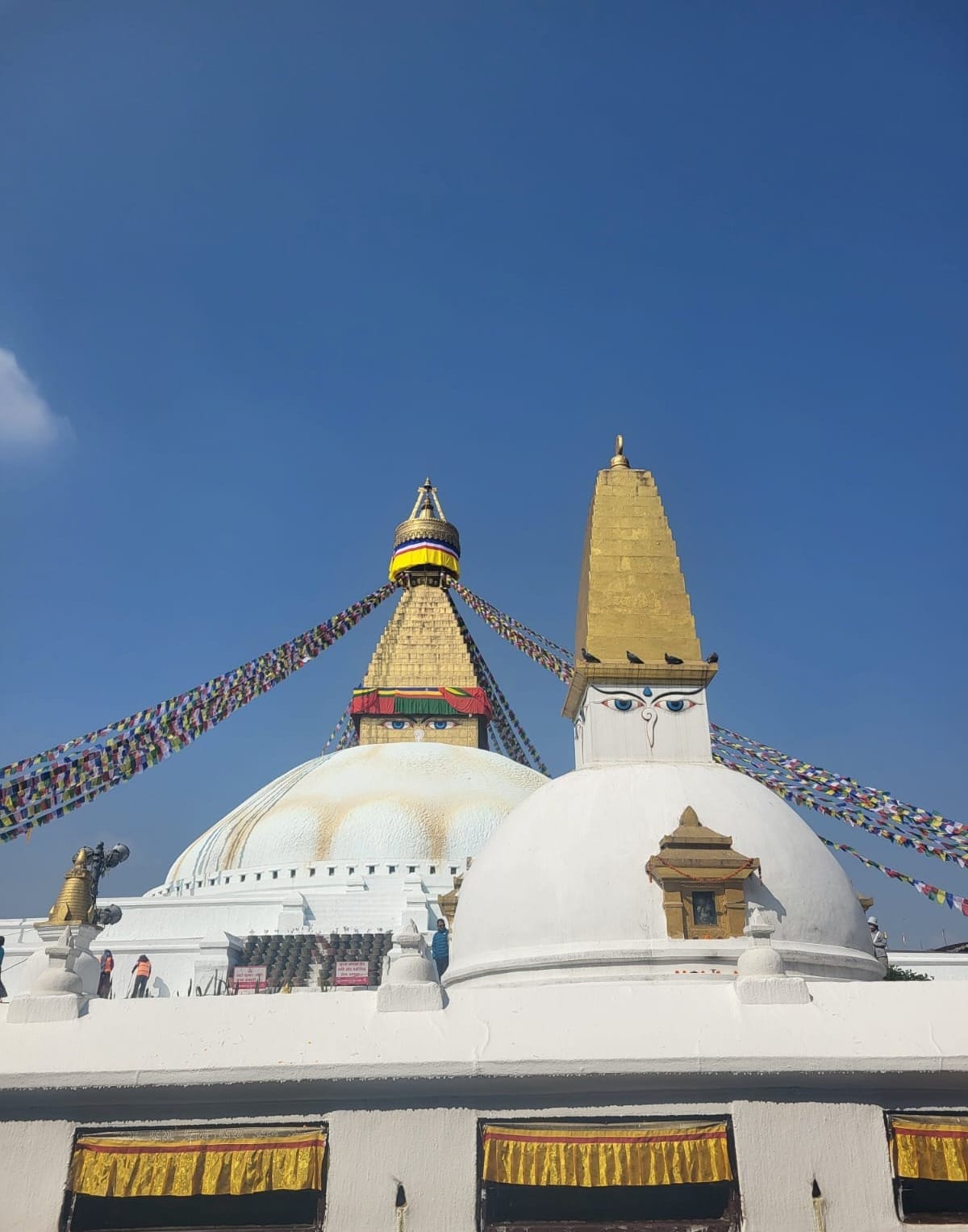
The stupa rose before us like a white mountain in the middle of a square. Its all-seeing eyes stared out from each side of the gilded spire, calm and eternal. Colorful prayer flags connect rooftops in blue, white, red, green, and yellow. They danced in the wind—each flicker of movement a blessing carried across the sky. They took with them thousands of whispered hopes—prayers for peace, health, clarity—fluttering out into the world.
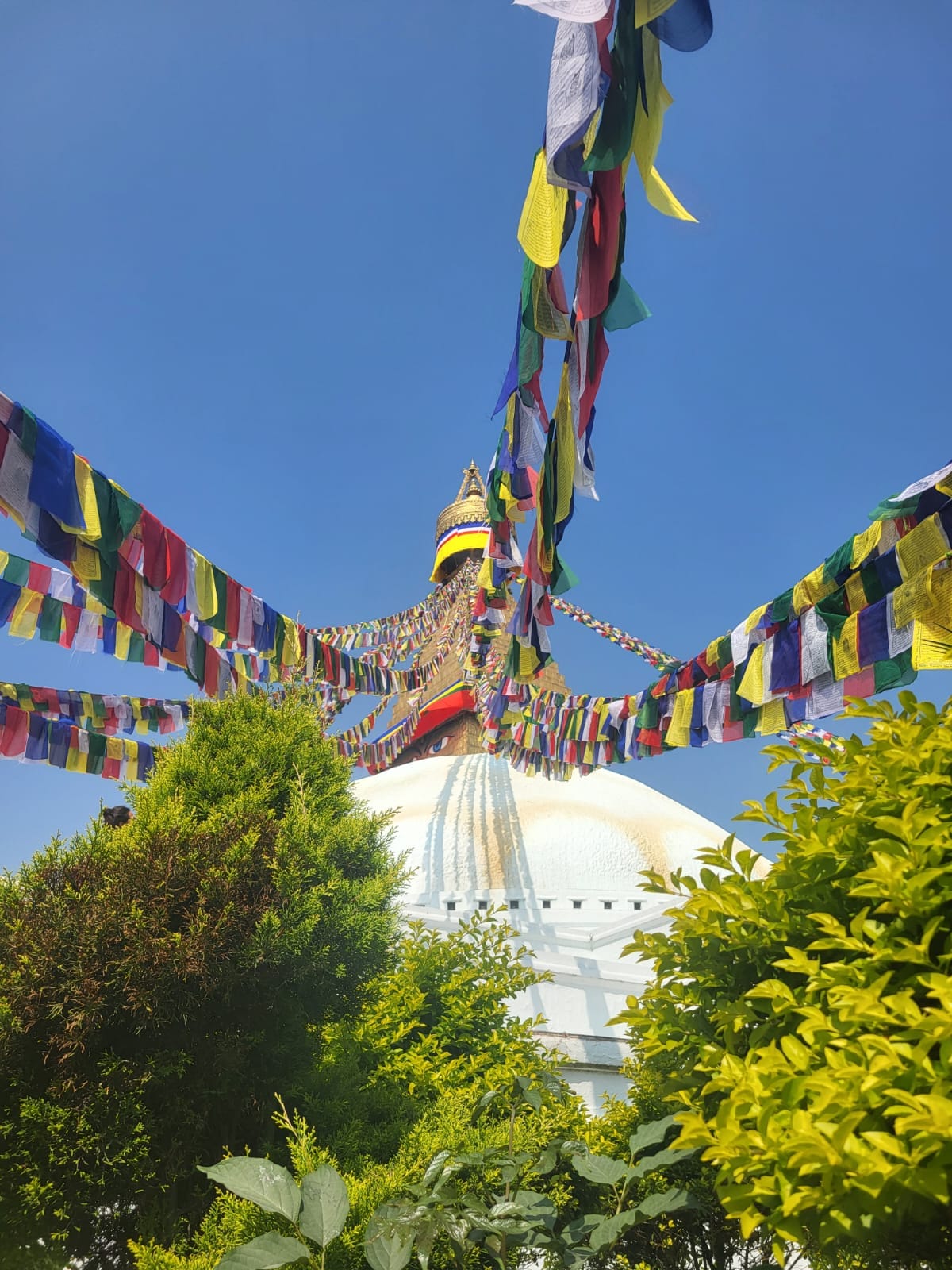
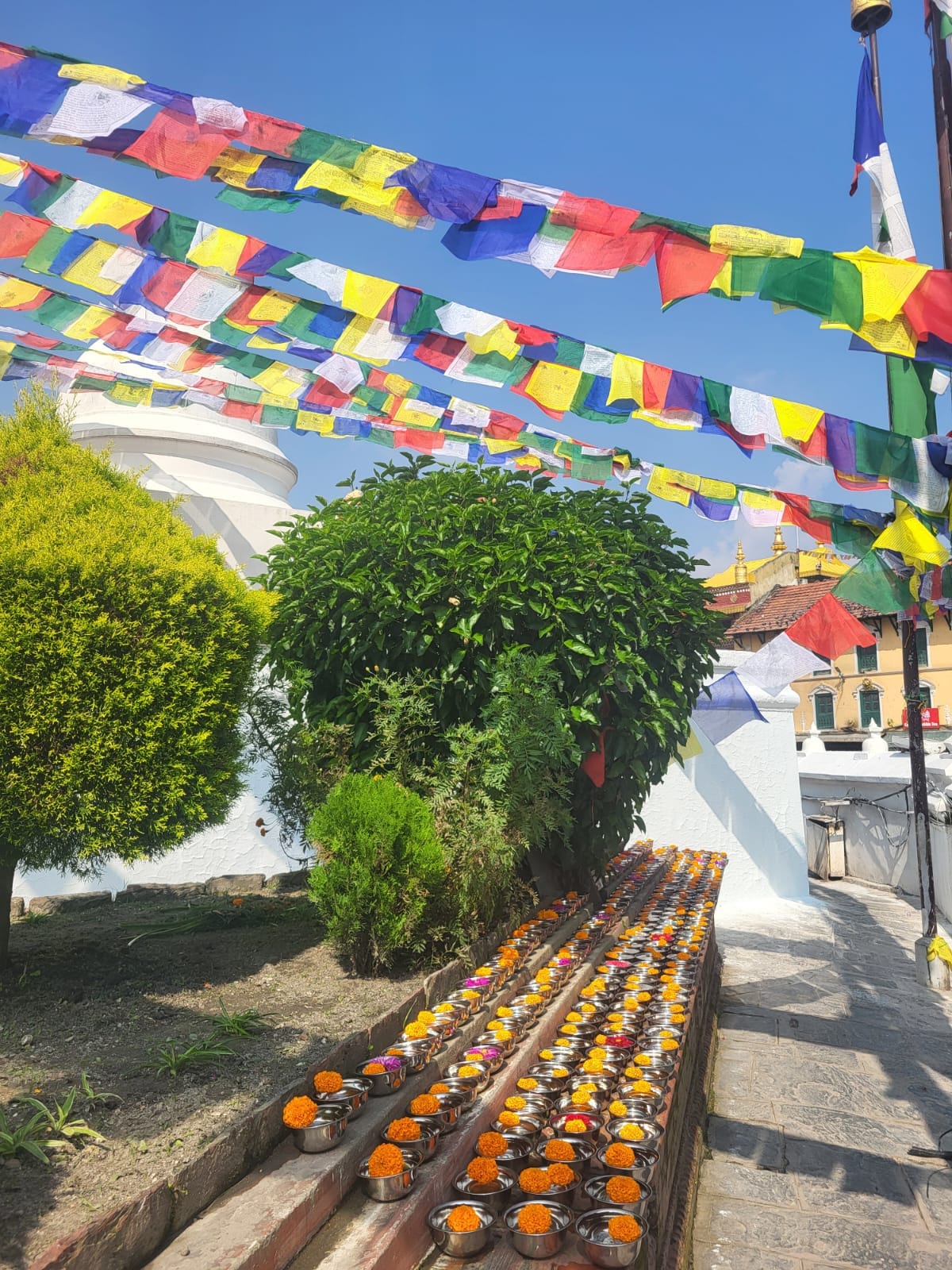
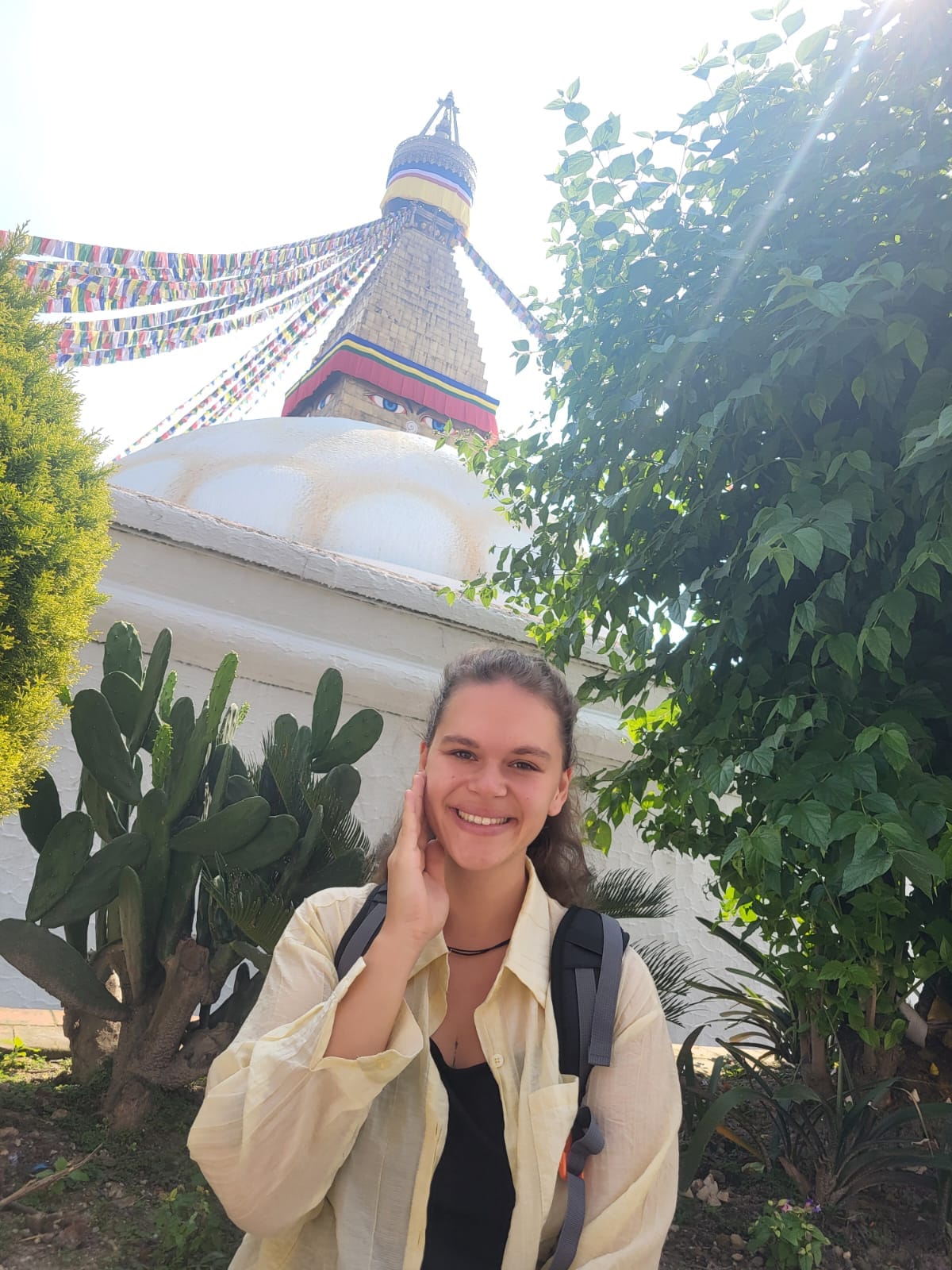
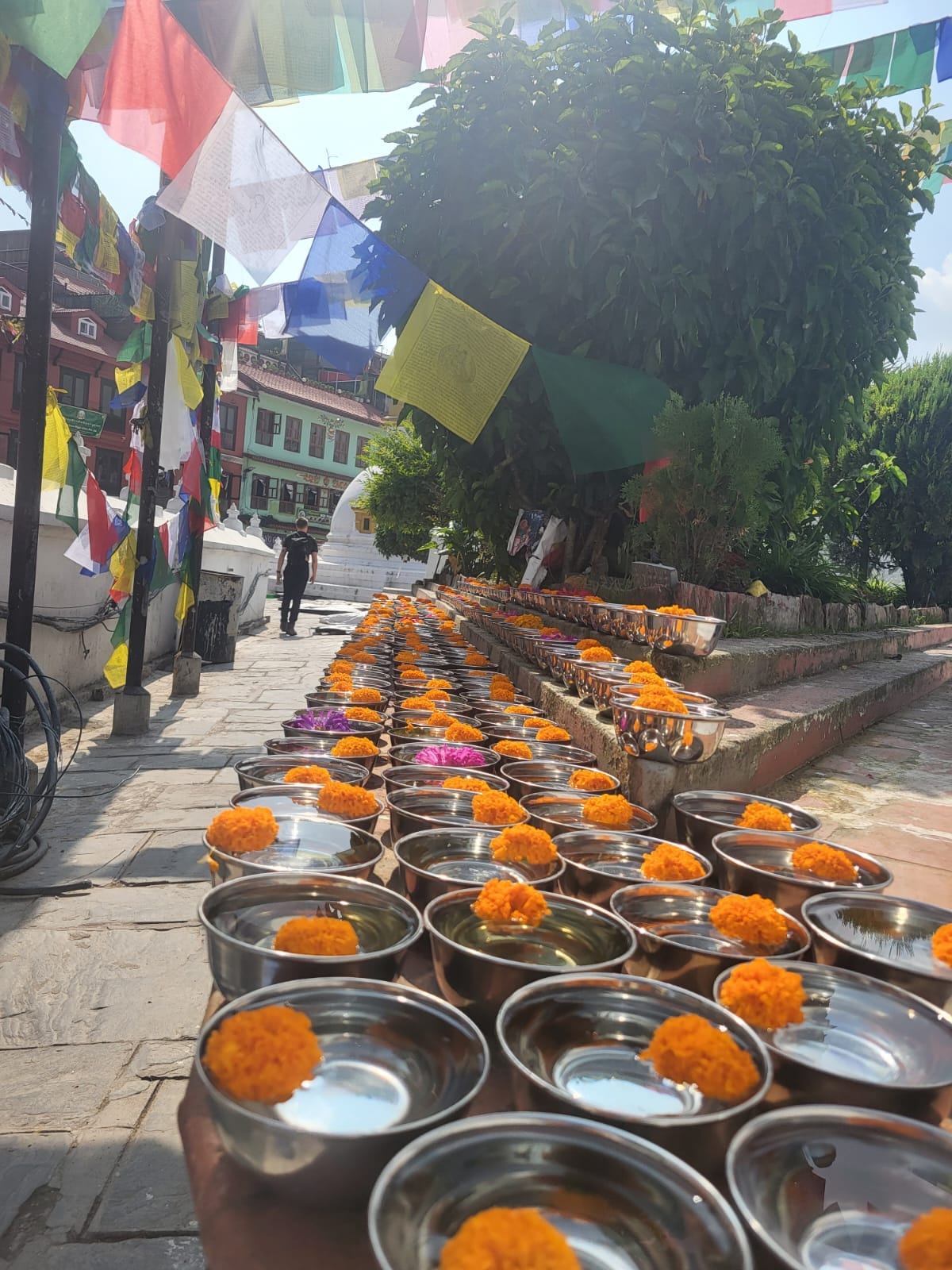
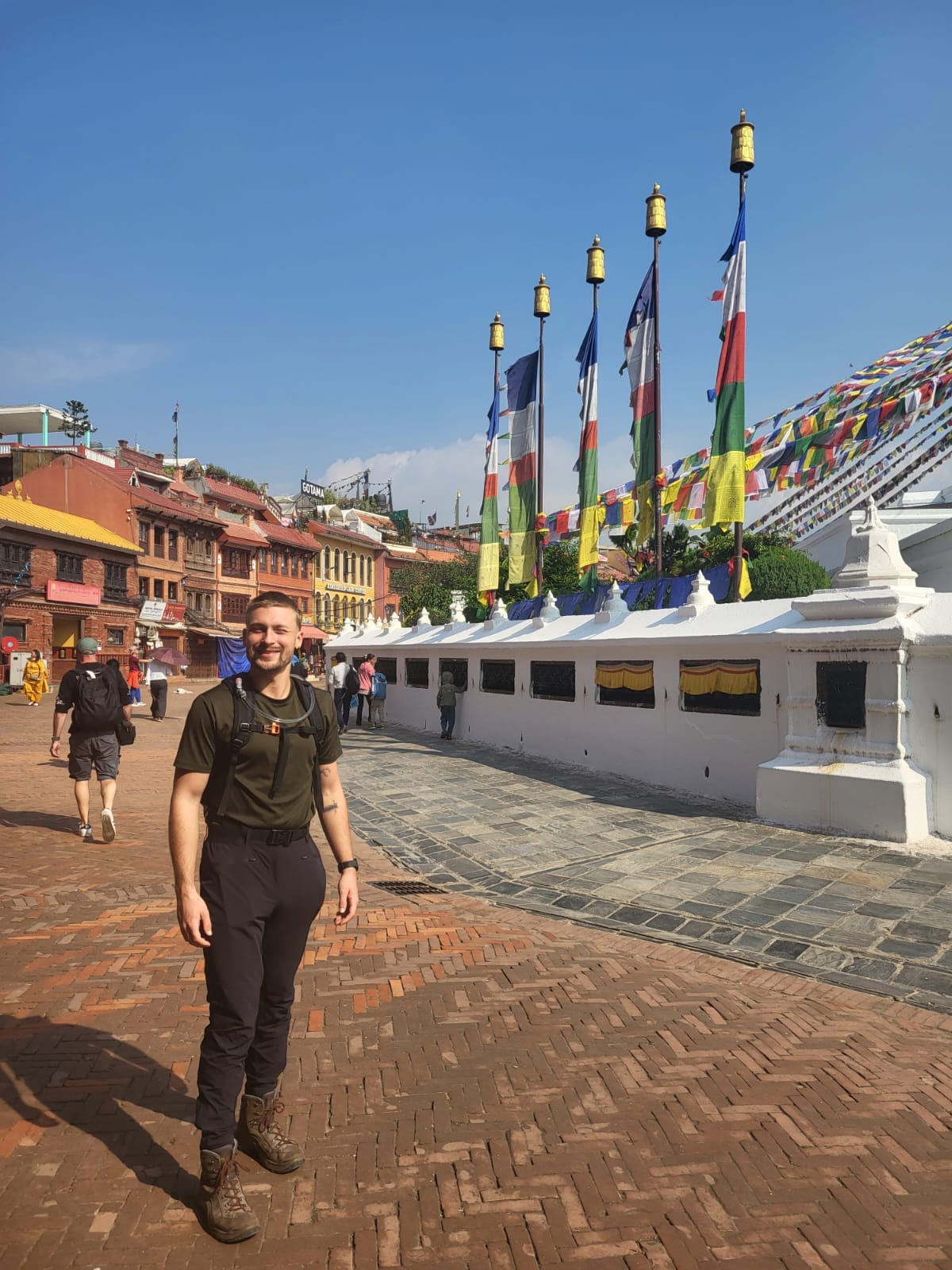
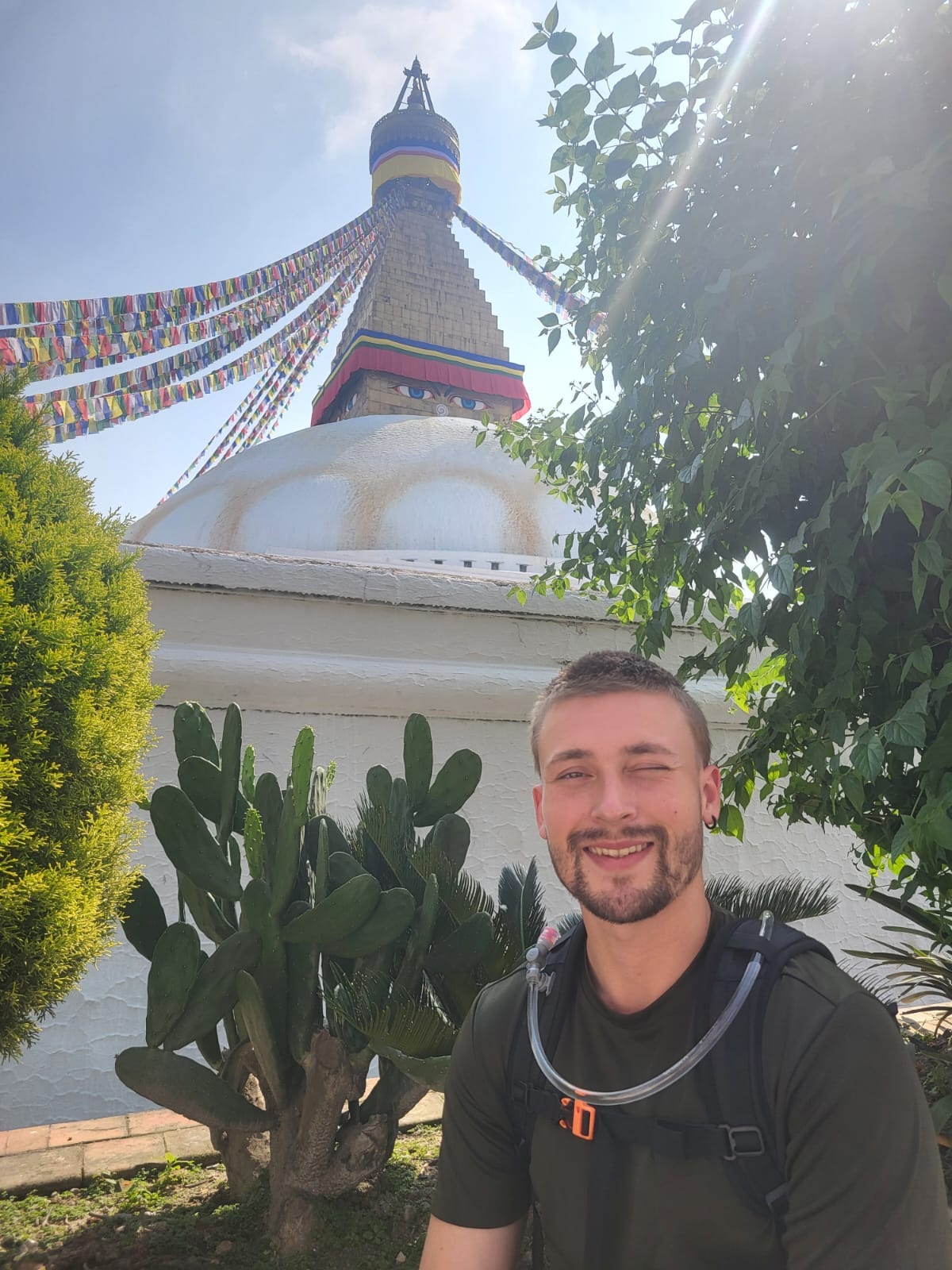
A Tibetan woman selling incense near the entrance explained that the flags don’t send prayers to the heavens. Instead, the wind itself becomes the prayer. As it brushes across the mantras printed on the cloth, the air is purified, infused with wishes for compassion, wisdom, strength, and peace. The prayers don’t belong to any one person—they are given freely to all beings.
A Tibetan prayer flag is a colorful rectangular cloth, often found strung along trails and peaks high in the Himalayas. They are used to bless the surrounding countryside and for other purposes. Traditionally, prayer flags come in sets of five. Blue symbolizes the sky and space, white symbolizes the air and wind, red symbolizes fire, green symbolizes water, and yellow symbolizes earth. According to Traditional Tibetan medicine, health and harmony are produced through the balance of the five elements. Prayer flags are used to promote peace, compassion, strength, and wisdom. The flags do not carry prayers to gods; rather, the Tibetans believe the wind will blow the prayers and mantras to spread the goodwill and compassion into the all-pervading space. Therefore, prayer flags are thought to bring benefit to all.


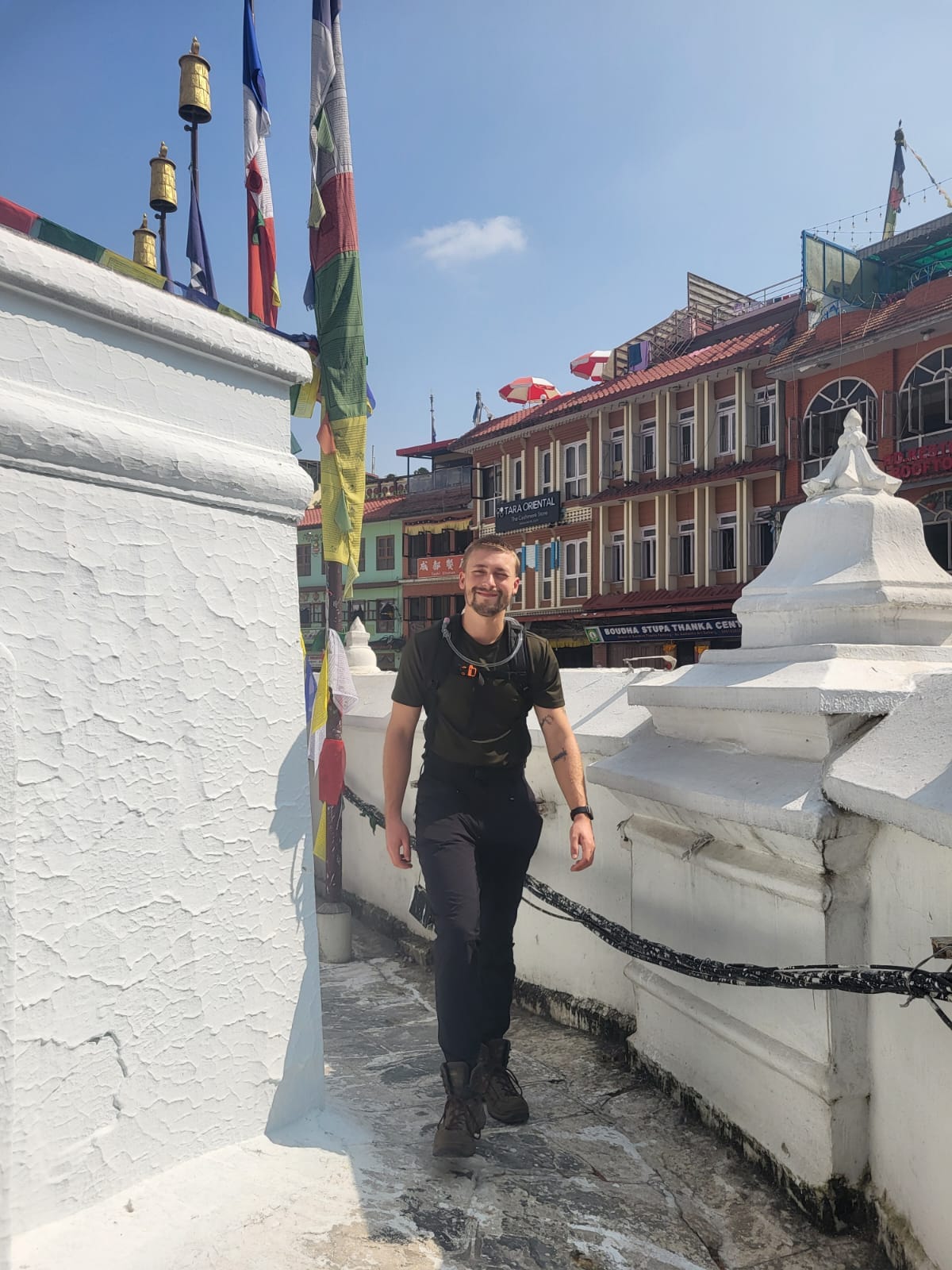
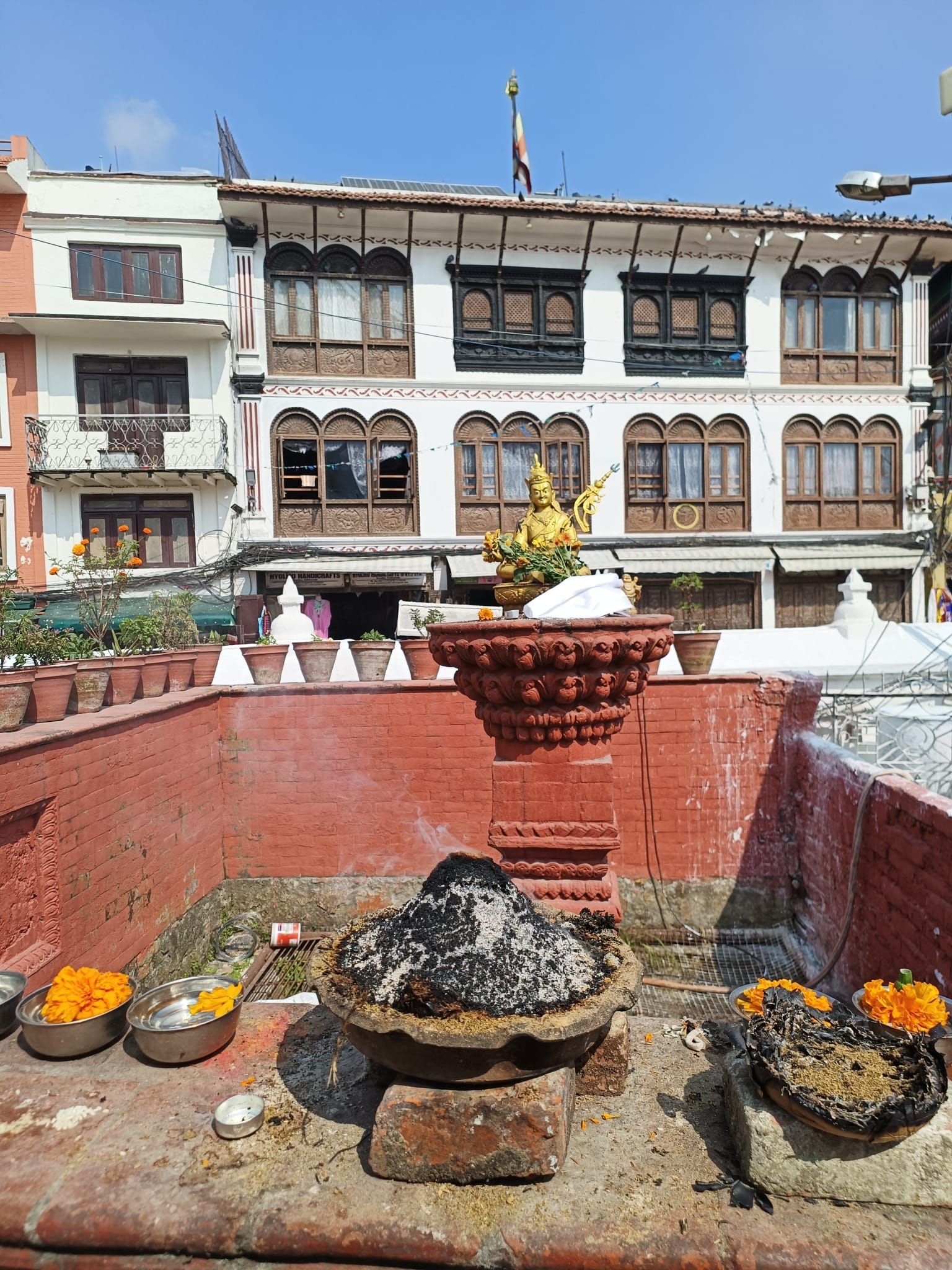
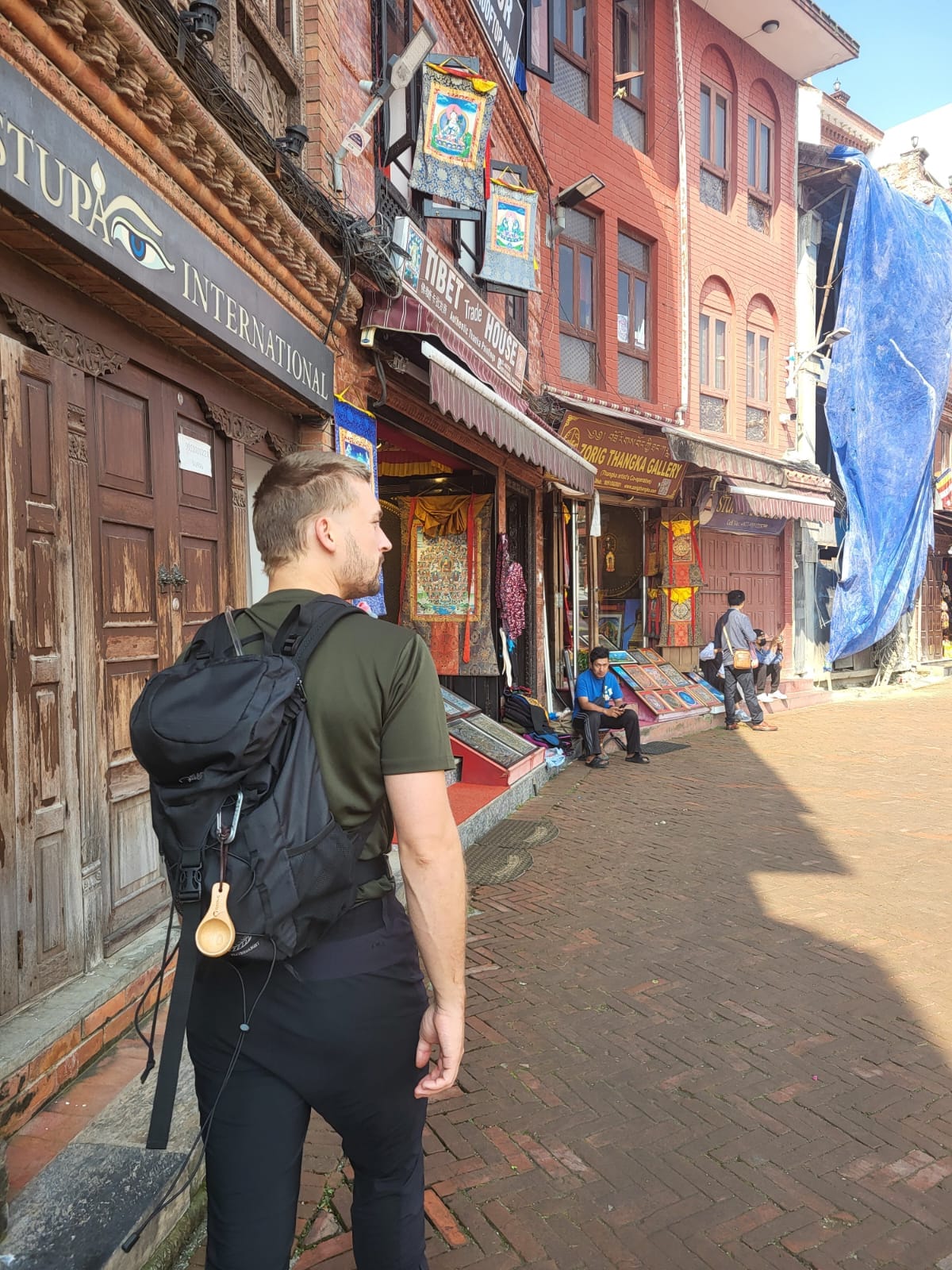
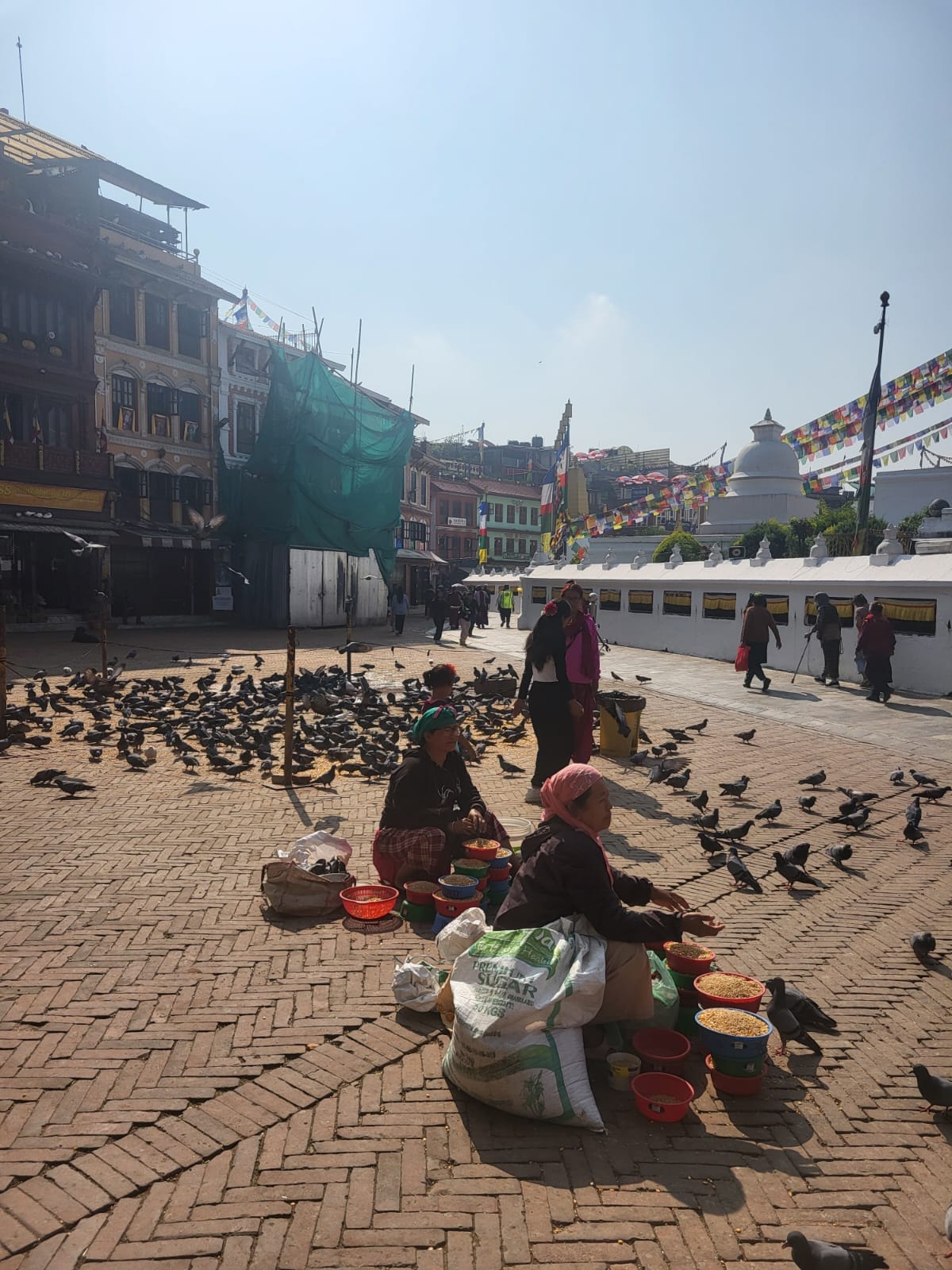
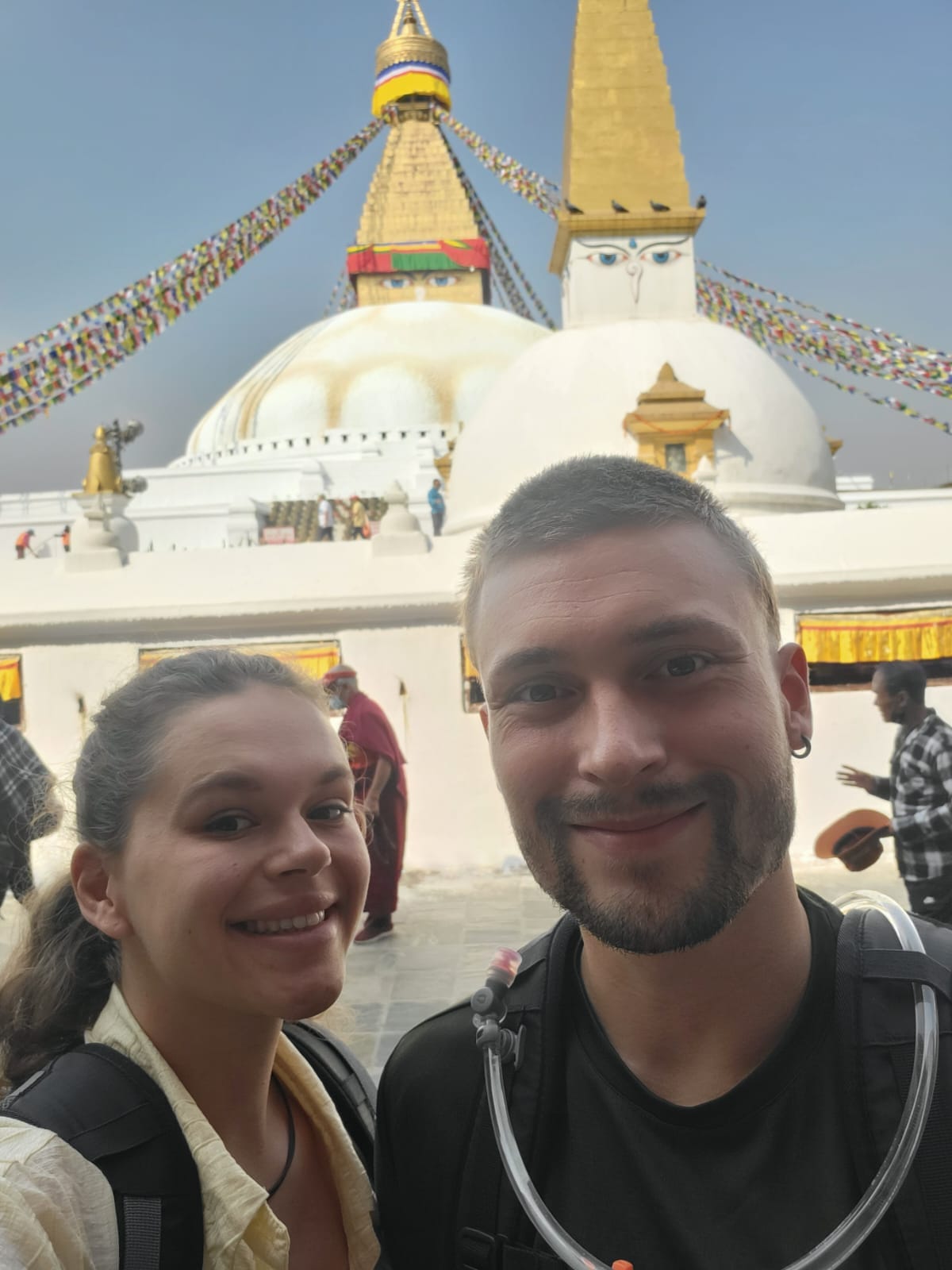
As we joined the crowd circling the stupa, we fell into step with monks, pilgrims, and other tourists, each of us slowly turning the rows of prayer wheels that lined the base of the stupa with our right hand. The wheels spun silently, the copper drums clicking softly, some of them polished smooth by years of use. Each turn, they say, equals the recitation of a full mantra, sending intention into the world with every rotation.

A prayer wheel, or mani wheel, is a cylindrical wheel for Buddhist recitation. The wheel is installed on a spindle. Prayer wheels are common in Tibet and areas where Tibetan culture is predominant. Traditionally, a mantra is written in Ranjana script or Tibetan script, on the outside of the wheel. According to the Tibetan Buddhist and Bon tradition, spinning such a wheel will have much the same meritorious effect as orally reciting the prayers.
The square surrounding the stupa was a mix of the sacred and the everyday: old Tibetan bookstores, cafés, and shops selling yak wool scarves, incense, and prayer beads. We ducked into one of the Tibetan shops to buy last-minute rain gear for the upcoming trek, and then found a set of steep steps leading up to a higher level of the stupa.
Climbing the steps to the upper level, we removed our shoes and walked barefoot on the stupa’s sun-warmed stone. Around us, locals murmured prayers or sat, eyes closed, faces toward the sky. From that height, we could see the life of the square unfolding below—a woman lighting butter lamps, children playing with stray dogs, a monk pausing to photograph a foreigner.
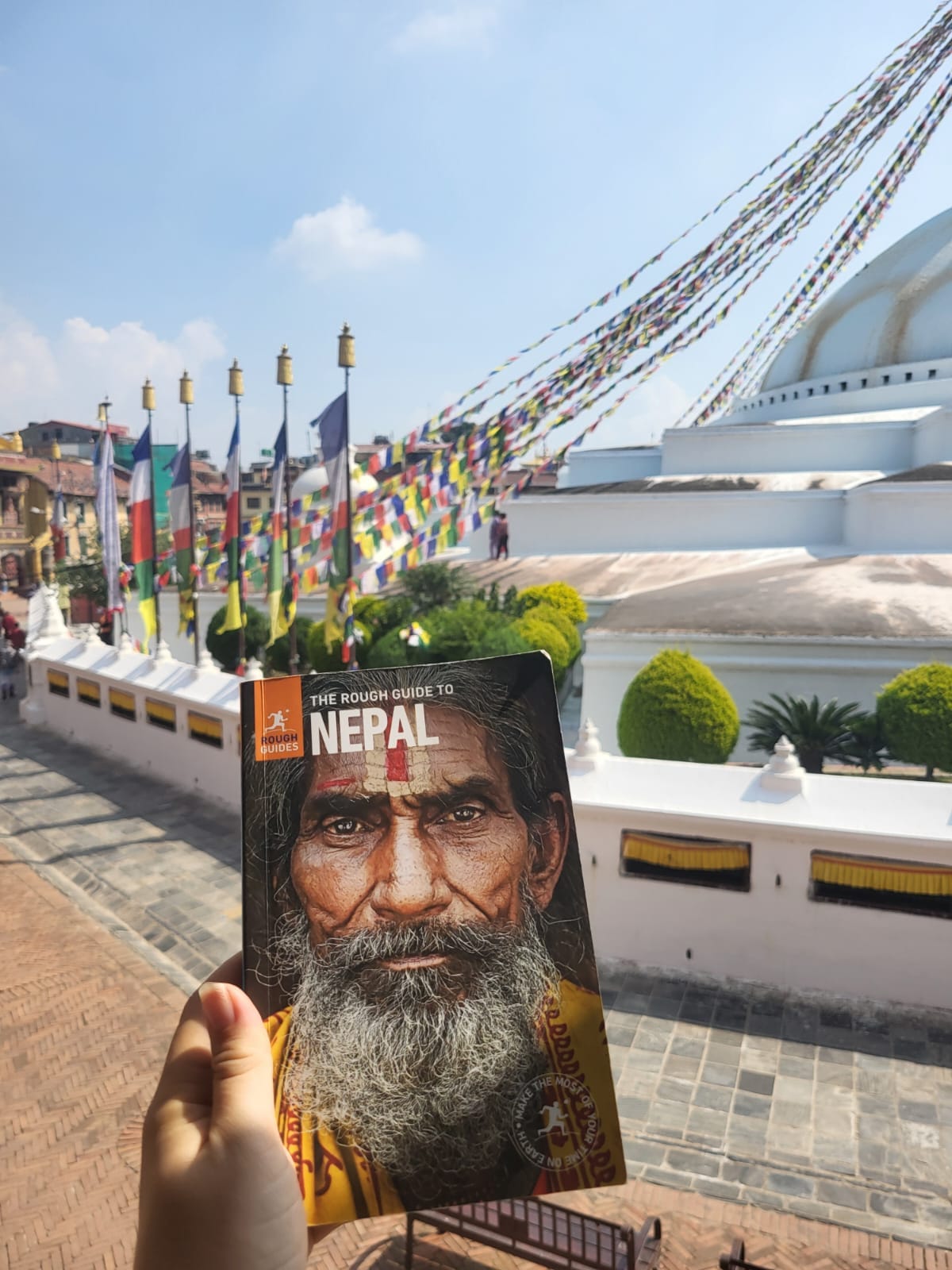
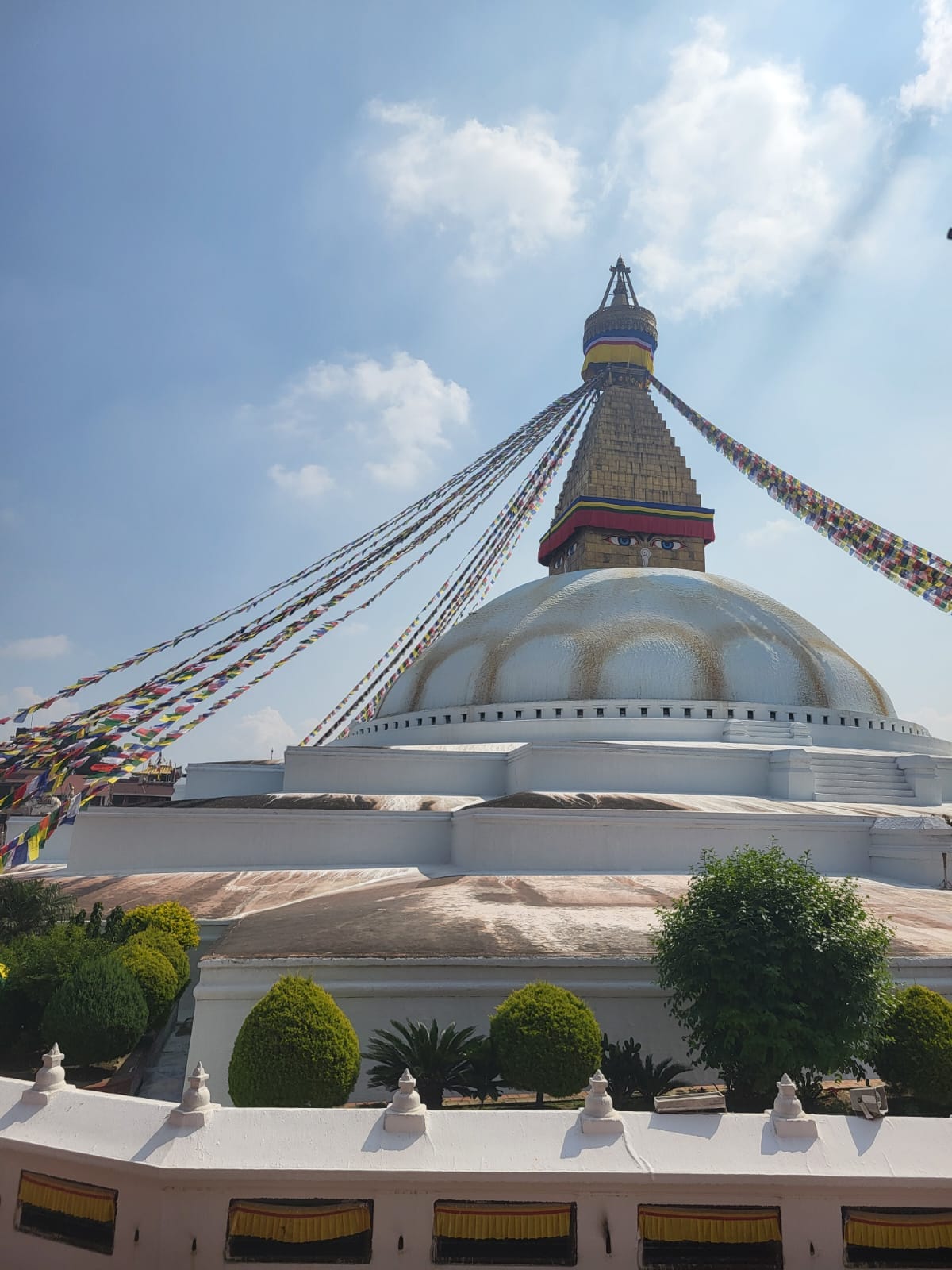
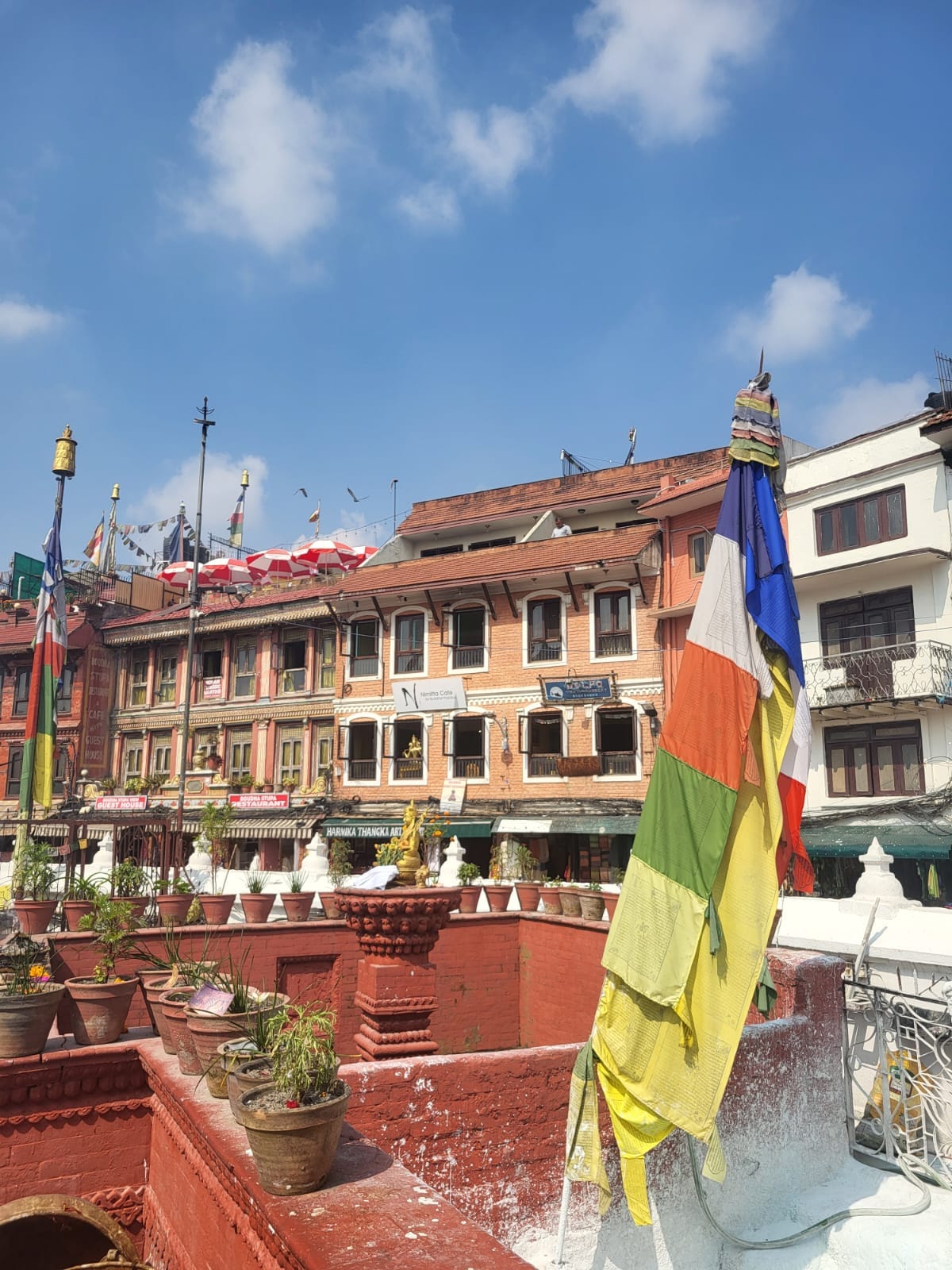
Eventually, we ducked into a nearby rooftop café. From there, coffee in hand, we had a perfect view of the stupa’s golden spire glowing in the late morning sun. We lingered, watching the world orbit the sacred monument, just as it had for centuries. People circling in reverence, spinning, praying, breathing. We stayed there longer than planned, watching the prayer flags ripple like scripture, fading from sun and wind. When they fray completely, they’ll be replaced, not to erase what came before, but to honor it and continue it.
Boudhanath isn’t just a tourist site. It’s alive with centuries of devotion. Originally built on a trade route between Tibet and India, it became a spiritual anchor for traders and pilgrims, and later a refuge for the Tibetan diaspora fleeing Chinese persecution after 1959. Over 50 monasteries now surround the stupa, each one humming with rituals, chants, and incense.
The 25 April 2015 Nepal earthquake badly damaged Boudhanath's Stupa, severely cracking the spire. As a result, the whole structure above the dome and the sacred relics it contained had to be examined and either saved or replaced.
We walked to the exit of the stupa with a quiet reverence. Our footsteps lighter, our thoughts slower. The moment we exited the sight, the honking traffic swallowed us again, even though it felt further away. Looking for a place to eat lunch before going to Thamel, the tourist center of this hectic city.